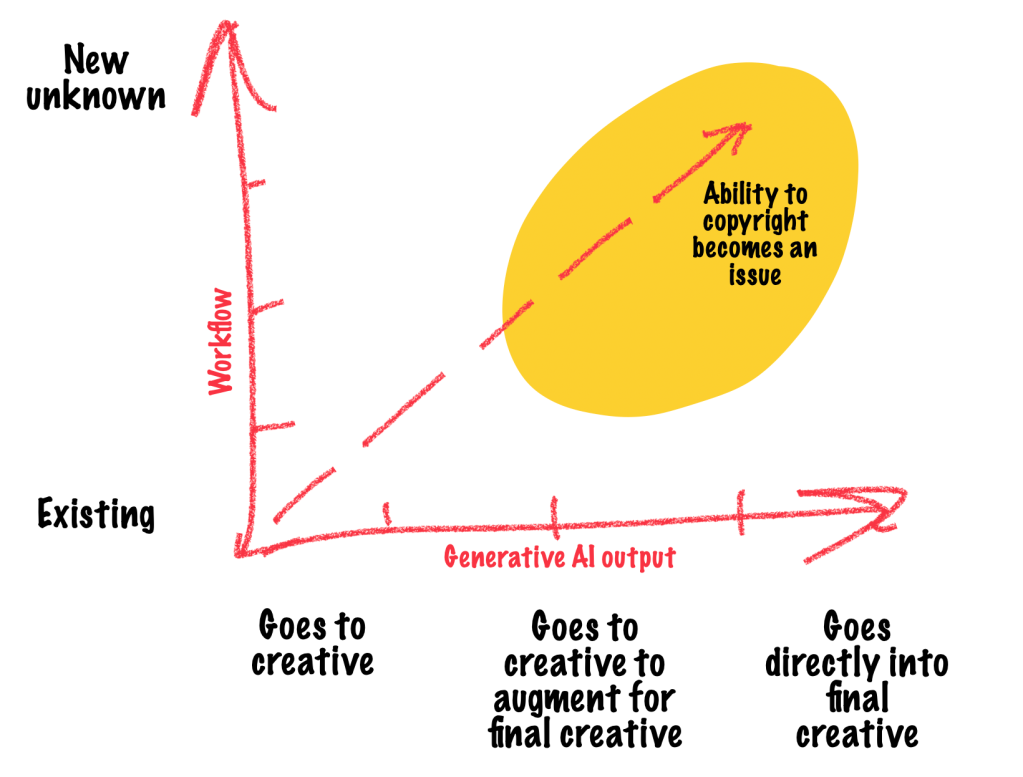Over the weekend, I had the privilege of attending the first Television Academy Artificial Intelligence Summit. It was great to see how the industry is starting to imagine the impact of generative AI. But it also felt like many people were talking past one another, either pitching a solution or hoping to engage in heated discussions about AI taking everyone’s job. This was in contrast to the more tech-focused meetups I have attended in Silicon Valley, where the discussion centers around problems many of us encounter as we move from prototypes to production. While it’s still early for all industies to adopt generative AI, I think the creative industries are even earlier on the curve. However, the discussion could always benefit from some context setting.
Context setting
We can start by laying out the problems/solutions on a two-dimensional graph. X being existing and future workflows, and Y addresses where generated AI output goes.

Both Generative AI and monkeys are not human and, therefore, can’t benefit from copyright protection
A graph like this can also highlight another popular topic from the summit: copyright, as of today, only protects works of human creation. On the “Generative AI And The Current Legal Landscape” panel, Ghen Laraya Long mentioned the interesting case of a monkey taking a selfie.
“Naruto v. David Slater et al.” is a legal case that gained international attention due to its unusual plaintiff: Naruto, a crested macaque monkey. The case arose from an incident where Naruto took several photographs of himself using a camera owned by David Slater. These “monkey selfies” became popular worldwide, leading to a copyright dispute over who held the rights to the images: the animal, the photographer, or nobody. Ultimately, the United States Court of Appeals ruled against Naruto, stating that the Copyright Act does not explicitly grant animals the right to hold copyright.

So the elephant in the room was whether you, as a creative, disclosed that you used generative AI in the creation of your work or not. According to the US Copyright Office, you had to disclose. And the elements that you disclosed would likely not be copyrightable. So, if you take a single line of dialog straight from ChatGPT and put it into your screenplay, that line is not copyrightable, while the rest could be.
You can see how this leaves developers building tools for generative AI and creatives hoping to use them in a bind until the US Copyright Office updates their stance – which at least they’re discussing.
Leave a comment